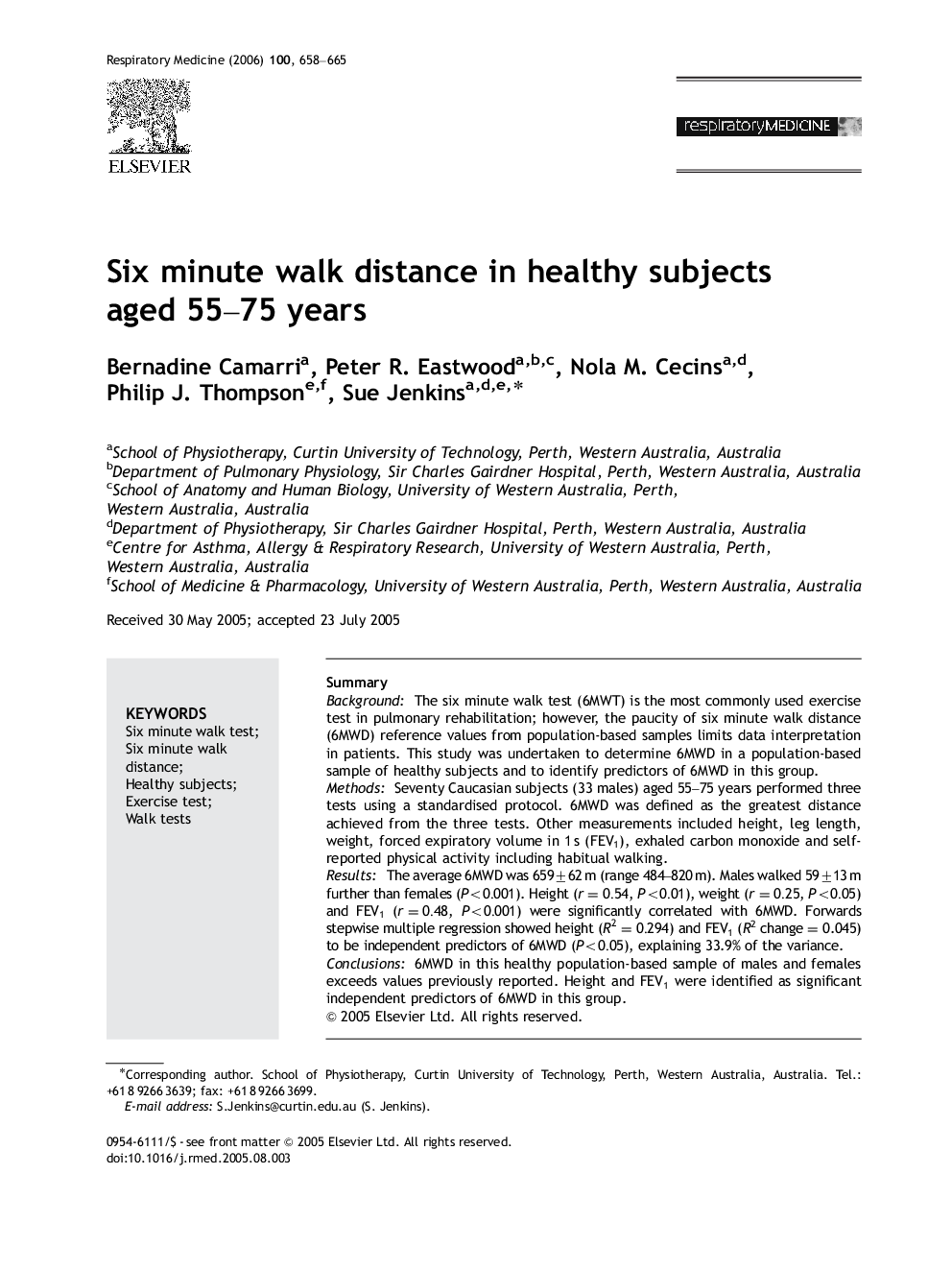| کد مقاله | کد نشریه | سال انتشار | مقاله انگلیسی | نسخه تمام متن |
|---|---|---|---|---|
| 4212509 | 1280699 | 2006 | 8 صفحه PDF | دانلود رایگان |

SummaryBackgroundThe six minute walk test (6MWT) is the most commonly used exercise test in pulmonary rehabilitation; however, the paucity of six minute walk distance (6MWD) reference values from population-based samples limits data interpretation in patients. This study was undertaken to determine 6MWD in a population-based sample of healthy subjects and to identify predictors of 6MWD in this group.MethodsSeventy Caucasian subjects (33 males) aged 55–75 years performed three tests using a standardised protocol. 6MWD was defined as the greatest distance achieved from the three tests. Other measurements included height, leg length, weight, forced expiratory volume in 1 s (FEV1), exhaled carbon monoxide and self-reported physical activity including habitual walking.ResultsThe average 6MWD was 659±62 m (range 484–820 m). Males walked 59±13 m further than females (P<0.001P<0.001). Height (r=0.54r=0.54, P<0.01P<0.01), weight (r=0.25r=0.25, P<0.05P<0.05) and FEV1 (r=0.48r=0.48, P<0.001P<0.001) were significantly correlated with 6MWD. Forwards stepwise multiple regression showed height (R2=0.294R2=0.294) and FEV1 (R2 change=0.045) to be independent predictors of 6MWD (P<0.05P<0.05), explaining 33.9% of the variance.Conclusions6MWD in this healthy population-based sample of males and females exceeds values previously reported. Height and FEV1 were identified as significant independent predictors of 6MWD in this group.
Journal: Respiratory Medicine - Volume 100, Issue 4, April 2006, Pages 658–665